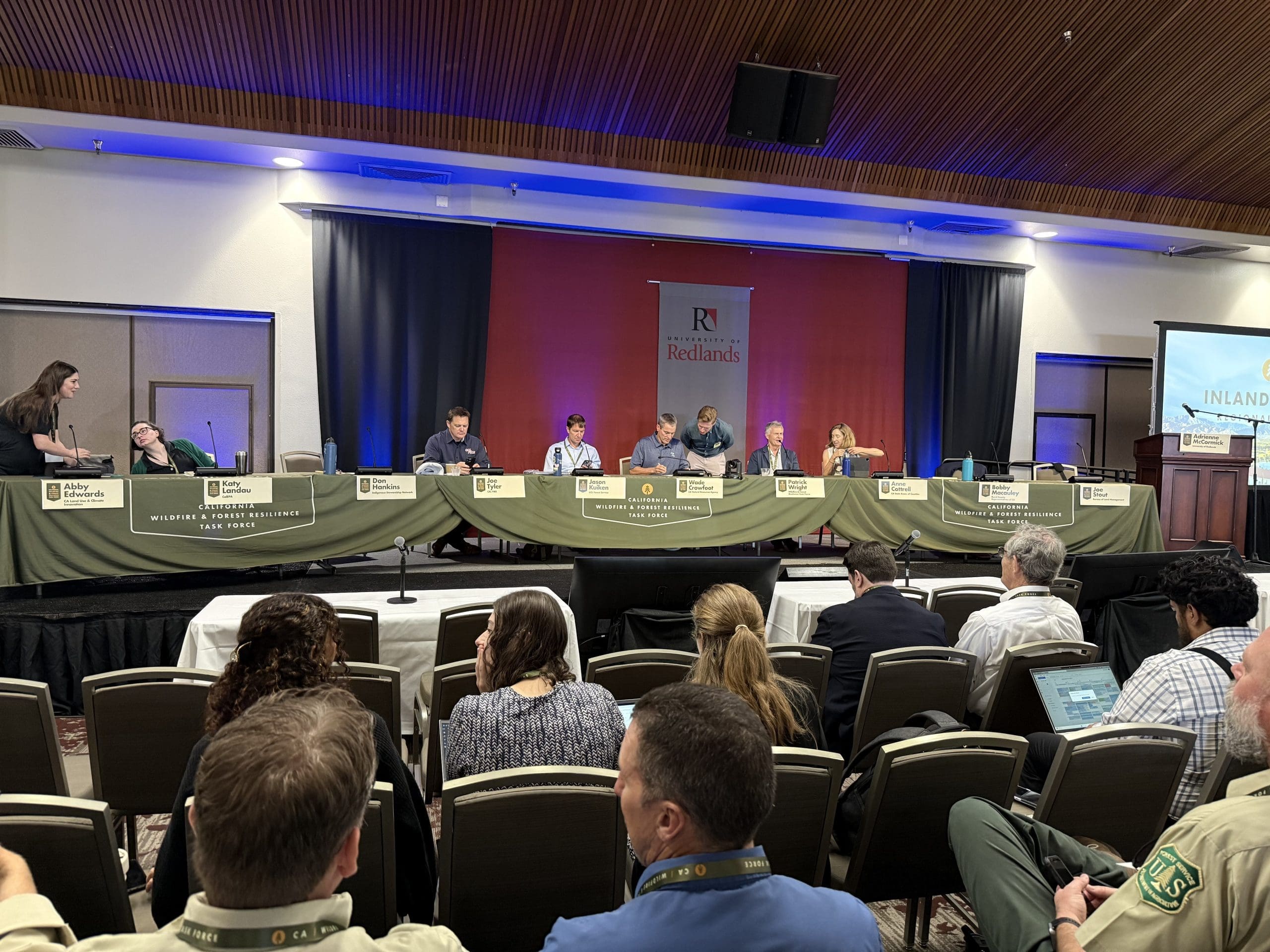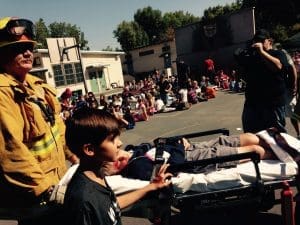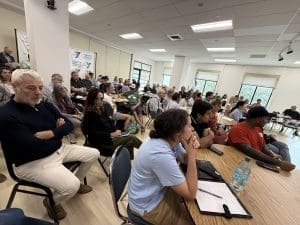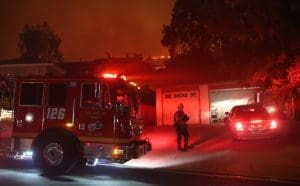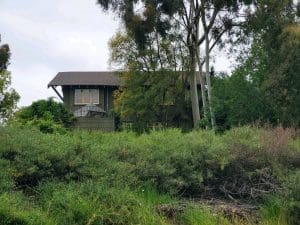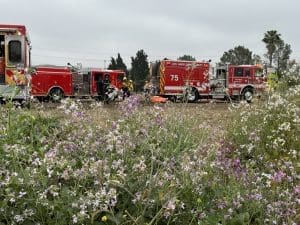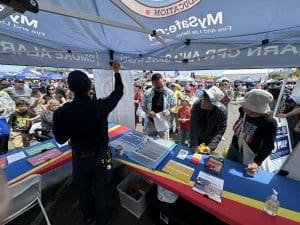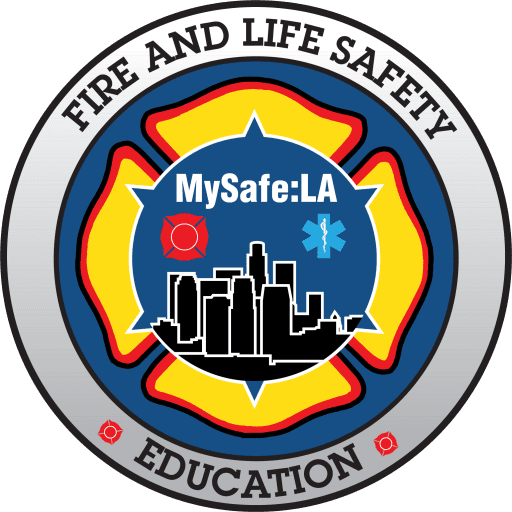Nearly 400 wildfire professionals, community leaders, and policymakers filled the Orton Center at the University of Redlands. At the same time, more than 350 additional participants joined online for the California Wildfire and Forest Resilience Task Force Inland Empire Regional Meeting.
The event — hosted by the Inland Empire Community Foundation and the Inland Empire Resource Conservation District — brought together the people shaping California’s wildfire future. Among them was MySafe:LA, representing the Los Angeles Division of the Safe Community Project, joining partners from CAL FIRE, Cal OES, Los Angeles County Fire, and wildfire coordinators from Kern, Orange, Riverside, and Ventura Counties.
MySafe:LA’s Role: Representing Urban Southern California
MySafe:LA participated in the meeting via its many connections at the local and state level to highlight the challenges that make Southern California’s wildfire environment distinct — and why funding models and resilience strategies must reflect that difference.
“Los Angeles County isn’t a forest. It’s a patchwork of brush-covered hillsides, grasslands, and dense urban neighborhoods built along the wildland-urban interface,” said David Barrett, Executive Director of the Safe Community Project. “If we want to reduce wildfire risk here, our state and federal programs have to recognize that the fuels, winds, and ignition patterns of Southern California require a different kind of investment.”
The Los Angeles Division of the Safe Community Project has been deeply engaged in building Firewise USA® neighborhoods, delivering Ready, Set, Go! training, and expanding home hardening education in communities ranging from Brentwood and Mount Washington to the Hollywood Hills and Chatsworth. MySafe:LA’s attendance at the Redlands meeting ensured those priorities were part of the broader state dialogue.
A Key Theme: Changing the “Forest-Centric” Funding Model
One of the central discussions during the meeting centered on the need to update California’s wildfire grant framework, much of which still reflects Northern California’s forest-dominant environment.
While those programs have successfully funded large-scale forest thinning and reforestation efforts, they often exclude projects in non-forest regions like Los Angeles, where fire behavior is driven by chaparral, sage scrub, and invasive grasses rather than timber fuels.
Southern California participants, including MySafe:LA, emphasized that funding eligibility should be broadened to include:
- Chaparral management and fuel break maintenance,
- Urban-edge defensible space and home hardening programs,
- Public education and evacuation readiness initiatives, and
- Cross-agency collaboration efforts that address ignition reduction and community preparedness.
“The fuels that drive wildfire in Los Angeles are small but explosive,” Barrett explained. “We can’t fight 100-foot flames in the Santa Monica Mountains with the same strategies used in the Sierra forests. Our funding tools must adapt to the real risks we face.”
Task Force Highlights: A Regional Approach to Resilience
The meeting’s agenda focused on three major themes that directly affect Los Angeles and its surrounding counties:
1. Wildfire Resilience in the Inland Empire: Collaborative Efforts Producing Results
Panelists shared success stories from multi-agency partnerships that reduced wildfire impacts during the 2024 fire season — including prescribed burns, vegetation management, and community training programs supported by CAL FIRE, the U.S. Forest Service, and regional nonprofits.
2. Southern California’s Roadmap to Resilience
Regional leaders outlined how cooperative agreements and local partnerships are turning strategy into measurable action — particularly in urban-edge counties where wildfire meets dense population.
Programs modeled after MySafe:LA’s outreach framework were recognized for their emphasis on education and home hardening.
3. Tracking, Funding, and Measuring Progress
Speakers discussed the importance of shifting from acres treated to outcomes achieved — a major step toward aligning wildfire metrics with community protection and ignition prevention, rather than just land management.
New digital tools were showcased to measure neighborhood-level resilience, tracking defensible space compliance, community engagement, and Firewise progress.
Representing Los Angeles in a Changing Fire Climate
Los Angeles County faces a unique wildfire equation: dense population, volatile fuels, and recurring Santa Ana wind events.
The county’s mix of urban canyons, hillside homes, and dry vegetation requires a resilience strategy built on public engagement, homeowner participation, and local innovation.
For MySafe:LA, participating in statewide forums like the Task Force meeting ensures that Southern California’s perspective is represented at the decision-making table.
“Our goal is simple,” said Barrett. “We want statewide wildfire policy and funding that reflect the science, the fuels, and the realities of where we live — from the Hollywood Hills to the Inland Empire.”
Moving Forward: Collaboration and Inclusion
As the Task Force continues to align state, federal, and local wildfire strategies, MySafe:LA will remain an active partner — advocating for urban wildfire resilience, expanding public education, and supporting data-driven prevention programs throughout the Los Angeles region.
The next step: ensuring that communities like Brentwood, Sylmar, Mount Washington, and Pacific Palisades — all identified as Very High Fire Hazard Severity Zones (VHFHSZ) — receive equitable access to the same resilience resources available to forested communities up north.
Learn More
If you missed the Inland Empire Regional Meeting, recordings and presentation materials are available through the California Wildfire and Forest Resilience Task Force at wildfiretaskforce.ca.gov.
To learn more about wildfire resilience programs in the Los Angeles region — including Firewise USA®, Ready, Set, Go!, and home hardening initiatives — visit wildfirela.org or contact the MySafe:LA Wildfire Unit.

